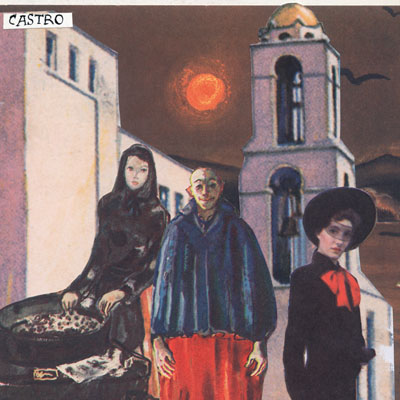We sang a hymn called ‘Poble en Marxa’ at the beginning of Mass in the working-class parish of Sant Blai. ‘Marxa’ was not a reference to the bearded prophet of revolution; it’s just the Catalan way of spelling marcha. People on the march. There was a lot of it about. In Barcelona, a million (the Catalans say two million) had marched to demand independence from an economically incompetent Madrid. In broke Madrid there were ten demonstrations in one day, with teachers and firemen being bused in to hold up banners and shout and blow whistles. The anarcho-syndicalists made a particularly brave showing. But that was all on the television. Here in Tortosa, in the parish of Sant Blai, there wasn’t much marching, just lots of hanging around. The black Africans hung around sadly, as they often seem to, singly or silently in pairs. None of their women were to be seen. No doubt they were at the other end of the cheap telephone lines that keep in business the public call shops, locutorios. The Asians hung around more gregariously, outside bars for which most of them had little use, some in long shirts and loose trousers, most in Maghreb-style jeans and T-shirts with unsuitable slogans (‘Sexy lady!’; ‘Bad influence’). Opposite the locutorio, through the open door of a house, men could be seen prostrate at prayer in their makeshift mosque. Never mind secession: on Sunday afternoon, with the shops shut, Tortosa is not for the Spanish, or for the Catalans.
A tap was set up on the wall in a street up the hill near the Castle in Tortosa, surrounded by a few coloured tiles with the date above: 1976. It is not much to ask for one tap in a street, and 20 years ago, when I first saw it, I thought it was a sign that the very poor neighbourhood was being improved. Today, the tap is there still. But it doesn’t work. A round-limbed girl wearing no shoes, but with painted toenails, had just filled two big containers with water from a hydrant nearby, somehow, and one of the bright-eyed, thin cats was lapping up spilt water from the broken pavement.
That tap had been installed 40 years after the war began that devastated Tortosa in the Battle of the Ebro. But as the historian of Tortosa, Jacobo Vidal, has remarked, the destruction of this historic city in the 1980s repeated what it endured in the war, except that at least after the war there was some attempt to mend things. Now ancient houses, which in England would be snapped up and restored to the brink of tweeness, are abandoned and left to fall down, streets are cleared, and the only people who want to live in the medieval town are immigrants and others with nowhere to turn.
This spring I had visited Lorca, in south-east Spain, which suffered an earthquake last year. The devastation in Tortosa is worse. On the old iron balcony of a ruinous house uphill from the tourist-orientated Centre for Interpretation of the Renaissance, a man with no shirt on was hanging out his laundry. In the medieval Carrer dels Capellans, two little children ran down from the prickly pear and cat infested waste ground and joined their mother in a cave-like crumbly stone room while the cock outside crowed. None of the money from the state-run Parador hotel, which has occupied the castle since 1970, trickles down to the ruins round its knees. Any of these poor who landed a job there would move to a flat where there’s proper water and no vermin. Luckily for the tourists who arrive by car, there’s a back way they can drive safely without seeing any of this.
The lion jumped down the steps and the children screamed. This was in front of the cathedral at Tarragona, and the lion wore a crown, for, though no one had told me before I arrived, it was the feast of St Tecla, which was to run for ten days, with loud drumming, trumpets, crowds, drink and close-up fireworks, day and night. The drink of the fiesta is, surprisingly, Chartreuse, green or yellow, in bottles with special St Tecla labels. It is drunk as a granizado, with pulverised ice, from litre flasks.
On the 19 high steps of Roman masonry (from the ancient Forum) linking the Carrer Major and the little cathedral square, with textbook disregard for health, safety and the 21st century, children sat on their fathers’ shoulders, or in their mothers’ arms, joggling in time to the beat of the drum and the fierce-eyed lion. Later comes the Drac, breathing fire and covered with spikes, on which fireworks rotate and explode. There is another beast too, 10ft high, called a Vibria, winged, beaked and clawed, with a woman’s breasts. The one that is carried here weighs 13 stone, but dances as lightly as the lion. A toddler standing on the lid of a wheelie bin jumped up and down with over-excitement, wafting out rubbish-flavoured billows, as the simple dance tune was repeated again at greater volume. It was all so happy, no one could think of anything bad ever happening again. Crisis? What crisis?
We are all victims of experience. After walking back from the extraordinary medieval monastery of Poblet, the image that remained strongest in my memory was of wayside stalks of fennel crowded with little white-shelled snails.






Comments